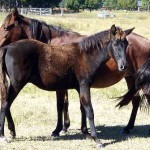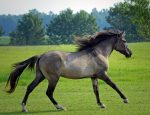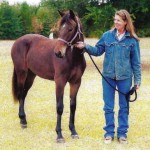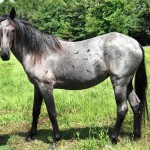Carolina Marsh Tacky
The Carolina Marsh Tacky, a rare horse breed belonging to the group of Colonial Spanish horses, is found in the American state of South Carolina. These small-sized horses can withstand heat and humidity while traveling across the swamps and marshes of South Carolina. The Marsh Tacky horses have a similar pedigree to that of the Banker and Florida Cracker horses. However, results of genetic testing have revealed that the social isolation or loneliness of the Tackies has separated them from the other breeds.
Carolina Marsh Tacky Horse Pictures
- Carolina Marsh Tacky Horse Foal
- Carolina Marsh Tacky Horse Pictures
- Carolina Marsh Tacky Horse
- Carolina Marsh Tacky Horses
- Carolina Marsh Tacky Images
- Carolina Marsh Tacky Pictures
- Carolina Marsh Tacky Stallion
- Carolina Marsh Tacky
Quick Information
| Alternative Names | The Marsh Tacky |
| Common Nicknames | Tackie, Tacky Horse |
| Temperament/Personality | Friendly, outgoing, affectionate, calm, and gentle horse with a sweet disposition |
| Physical Characteristics | Either flat or concave head that gradually becomes convex from its nasal area to the tip of its muzzle; broad forehead with widely spaced eyes; slightly ewe neck; deep, narrow chest with long inclined shoulders; steeply angled croup, pronounced withers, short and powerful back; its legs have long muscles that become thinner at one end, and the lower legs are devoid of feathering |
| Colors | Multi-colored patterns including Pinto were found in the past, but now different colors such as bay, roan, dun, black, chestnut, and grullo are seen |
| Common Use | Help herding cattle and hunting wild game, endurance riding; traditionally used for its working abilities, as also for mounting women and children |
| Lifespan/Life Expectancy | A hardy breed that may live up to 30 years |
| Weight | An average of 800 lbs (363 kg) |
| Height (size) | Even though the standard range is 13-15 hands (132-152 cm, 52-60 inches), its average height is 14-14.2 hands (142-144 cm, 56-57 inches) |
| Health | No specific health issues of the Tacky horse have been identified so far |
| Gaited | A four-beat amble that is often compared to the Missouri Fox Trotter’s fox trot and Mangalarga Marchador’s marcha batida; its gait shows quadrupedal support with all the feet being planted and pairings are formed by the diagonal feet |
| Popular Traits | Smart, strong, sturdy, resilient with a calm nature; can survive on little food and live in a harsh environment; works in marshlands |
| Feeding/Diet | Though the Marshtackie is an easy keeper, it requires the correct balance of nutrients; good quality forages, grain, vitamin or mineral supplements, and fresh water should be given |
| Country of Origin | The USA |
| Ancestors | Spanish horses |
| Year/Time of Development | The 16th century |
| Breed Information | Recognized and registered by the Carolina Marsh Tacky Association Breed Standards |
Video: Carolina Marsh Tacky Horses
History and Development
The Tackies are believed to have a history of over 400 years. These horses have originated from the Iberian horses imported to the South Carolina coasts and islands by the settlers and explorers from Spain during the 1500s. Later, some more horses were brought and included into the population of Spanish horses, which were purchased at the St. Augustine settlement in Florida. The settlers used these animals as packhorses along the trading routes followed by the Choctaw, Creek, and Chickasaw tribes. After arriving in Charleston, the traders used to sell these horses.
Traditionally the Marsh Tackies have been managed as feral animals, but assembled by the locals when needed. Because of their resilience and versatility, their colonial owners used them for ranching, hunting, and plowing fields. During the American Revolutionary War, these were extensively used as cavalry horses by the military officer Francis Marion and his men. The Gullah community, living in the South Carolina Lowcountry region, used the Tackies in gardens and fields. Moreover, they were utilized in guarding the beaches against Nazi attacks and enemy landings during the Second World War.
However, with the advancement of farming equipment, these horses declined in numbers. They were believed to be extinct during the 80s and the 90s. Fortunately, after the formation of the CMTA (Carolina Marsh Tacky Association) in 2007, their numbers improved to 250 horses though they are still considered endangered on the ALBC (American Livestock Breeds Conservancy) list. The objective of the CMTA is to protect and promote the Tacky horses.
Interesting Facts
- The CMTA and the ALBC hold Marsh Tacky races every year to increase public awareness and provide support for the horses. The stallions, geldings, and mares race at the shores of Hilton Head Island in South Carolina.
- The Marsh Tackies were designated as South Carolina’s “state heritage horse” in June 2010.
A 200-year-old articulated skeleton of a horse, thought to be a Tacky, was dug up at an archeological site in St. Augustine in 2015.











